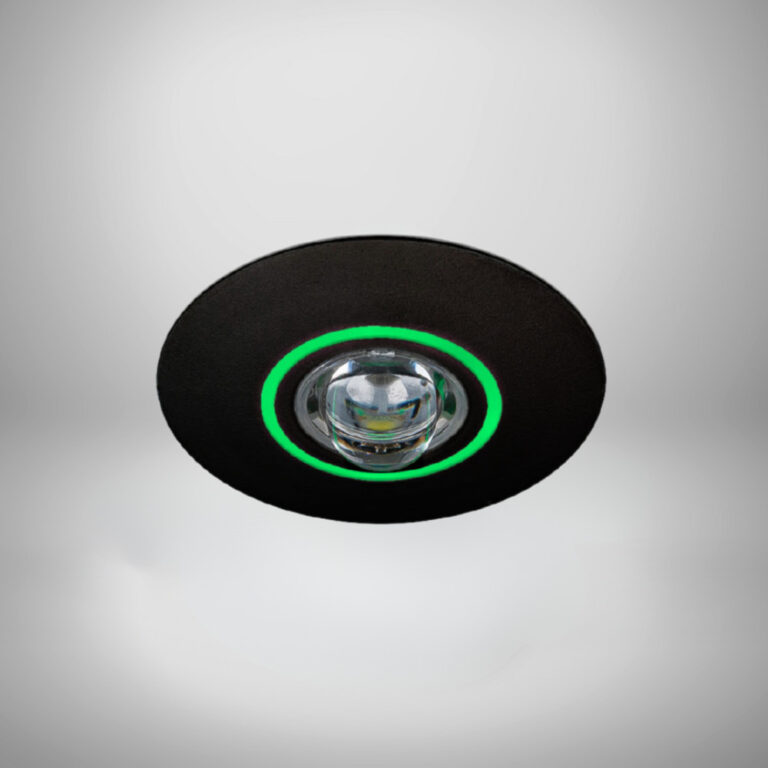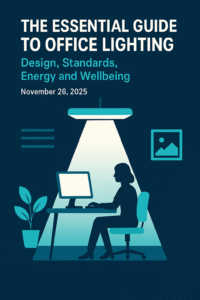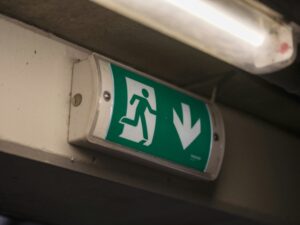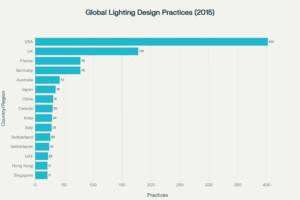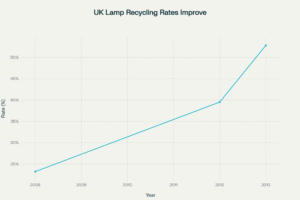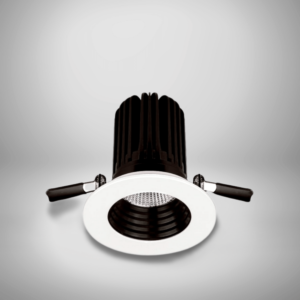We set out what EN 60598-2-22 demands from emergency luminaires so you can specify with confidence. This article clarifies the key requirements for luminaires that run on emergency power up to 1,000 V. It highlights battery and capacitor rules, high temperature testing and material resistance.
We explain scope in plain terms. You will see practical implications for product choice, maintenance cycles and stock planning. The updated rules on lithium cells and EDLCs matter for procurement and end‑of‑life handling.
Our aim is simple: turn technical changes into actionable steps for installers and specifiers. We show how rest and inhibiting modes affect on-site setup, and how exit sign contrast tests map to routine verification.
In short, this introduction gives a clear route to compliance without adding delay. We link standard tests to UK safety duties so compliance supports resilience and occupant safety, not paperwork.
Specialist support for EN 60598-2-22 compliant emergency luminaires in the UK
We support clients across the UK to specify compliant luminaires emergency lighting with clarity and speed.
What we do: we supply luminaires tested to the current UK adoption and advise on where to use self‑contained versus centrally supplied units. Our engineers balance autonomy time, maintenance access and environmental factors so systems work in practice, not just on paper.
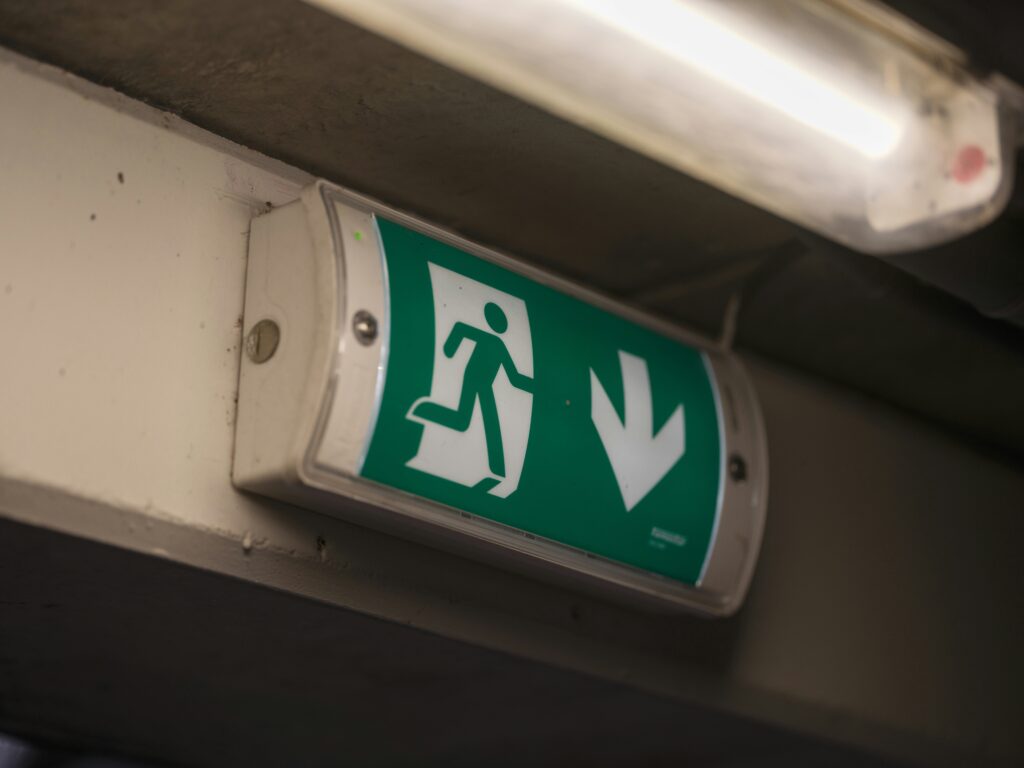
We provide selection guides mapped to common building types — offices, healthcare, education and retail — so teams can specify with confidence.
| Service | Scope | Benefit | Delivery |
|---|---|---|---|
| Product supply | Tested luminaires to current UK standard | Compliance for sign‑off | Nationwide |
| Technical advice | Self‑contained vs central systems | Optimised maintenance | Site visits & remote support |
| Documentation pack | Data sheets, declarations, test summaries | Faster O&M compilation | Shared by email |
| Audit & replacement | Existing installations from withdrawn editions | Risk reduction and conformity | Rapid swap‑in options |
What EN 60598-2-22 covers for luminaires used in emergency lighting
This section explains the standard’s scope and the practical tests that matter when you choose and commission emergency luminaires.
Scope and voltage limits
The publication applies to luminaires running on emergency power supplies up to 1,000 V and to the associated control gear and lamps they use.
That means any unit you specify must be demonstrably suitable for those supply conditions and for the environment where it will be installed.
Rest and inhibiting behaviour
Updated particular requirements cover rest and inhibiting behaviour. Devices must act predictably during mains restoration, commissioning and maintenance.
We expect no nuisance discharge, clear status indication, and a safe return to normal operation when power is restored.
High temperature, materials and sign contrast
High temperature operation tests are clarified. Choose units validated for plant rooms, ceiling voids or sheltered outdoor locations.
Materials and construction must resist heat, fire and tracking; enclosure ratings and plastics specs matter for long-term safety.
Test methods for exit sign contrast are also defined, so we supply luminance and contrast data for on-site verification.
Self-contained units and batteries
Test facilities for self-contained luminaires are clarified. Units should have accessible test switches, indicators or compatible automatic test features for routine checks.
Battery provisions are strengthened, with new rules for lithium and EDLC cells. We map each clause of iec 60598 to simple commissioning checks to speed sign-off.
| Test | Where it matters | On-site check |
|---|---|---|
| High temperature | Ceiling voids & plant rooms | Ambient-rated unit confirmation |
| Rest/inhibit mode | Mains restoration points | Status indicator and recovery test |
| Contrast measurement | Exit signage | On-site luminance reading |
From IEC 60598-2-22:2021 to BS EN IEC 60598-2-22:2022 in the United Kingdom
This short guide shows what changed, what to retire and how to act.
BS EN IEC 60598-2-22:2022 is now the current UK adoption. It aligns the international iec Edition 5.0 technical revision with UK practice.
Current UK adoption and withdrawn editions at a glance
The 2014 series and the 2014+A1:2020 amendment are withdrawn. Do not use those documents for new projects.
Edition 5.0 technical revision and stability date to 2026
Edition 5.0 is a full technical version change. It revises rest/inhibit modes, high temperature tests, lithium and EDLC rules, and exit sign contrast testing.
- Action: update specifications and employer’s requirements where older references appear.
- Action: re‑check product conformity even for legacy models previously accepted.
- Action: use the 2026 stability date to plan procurement and framework renewals.
| Item | What to do | Benefit |
|---|---|---|
| Withdrawn editions | Replace references in project docs | Clear compliance trail |
| Edition 5.0 changes | Re‑verify affected luminaires | Reduce on-site non‑conformities |
| Version control | Track multi-site documents | Consistent O&M and audit records |
EN 60598-2-22 compliance pathway: audits, product selection and testing
A pragmatic compliance pathway starts with a focused gap analysis of drawings, asset lists and on‑site samples.
Gap analysis and site/luminaire compliance audits
We review drawings and asset lists to benchmark installations against key requirements. This flags quick wins and critical risks fast.
Selecting certified luminaires for emergency use and mode configuration
We shortlist certified luminaires matched to temperature, IP, IK, mounting and optics. Declarations are checked against the current UK adoption.
For use in stairwells, plant areas or open spaces, we advise spacing and photometrics to meet illuminance and uniformity targets.
Documentation packs, test records and third‑party certification support
| Stage | Focus | Deliverable | Benefit |
|---|---|---|---|
| Gap analysis | Drawings, samples, asset list | Risk register & quick‑win list | Clear remediation steps |
| Audit | Labels, autonomy, mode | Site audit report | Operational confidence |
| Product selection | Environment, optics, declarations | Shortlist & datasheets | Right‑fit luminaires |
| Verification | Test records, third‑party support | Documentation pack | Faster sign‑off |
Battery technologies under the standard: lithium and EDLC requirements
Battery choices shape how a luminaire behaves in a real emergency and during routine testing.
The updated iec 60598 introduces tighter rules for lithium packs and EDLC modules. Manufacturers must show cell protection, thermal limits, charge control and labelling that meet the new particular requirements.
New requirements for lithium batteries in emergency luminaires
We design emergency luminaires with integrated protection and proven compatibility with control gear. Enclosure selection and thermal design are essential so battery temperatures stay within declared limits under worst‑case ambient and charge states.
Electric double layer capacitors (EDLCs): particular considerations for use
EDLCs need voltage balancing and end‑of‑life handling plans. Their fast charge/discharge behaviour changes maintenance timing and test procedures.
- Maintenance: chemistry‑specific functional tests to reflect how storage behaves over time.
- Safety: housings and terminals must resist heat, fire and tracking.
- Compliance: validate lamp combinations and document transport and disposal to support sustainability.
| Item | Focus | Outcome |
|---|---|---|
| Battery pack | Protection & labelling | Traceable safety |
| Thermal design | Enclosure & mounting | Declared performance met |
| Self‑contained test | Test facilities | Simplified monthly/annual checks |
Designing, installing and maintaining compliant emergency lighting systems
Design first, verify early. We size and space luminaires emergency lighting to meet coverage and uniformity targets from your drawings. This saves fixtures and keeps sightlines clear.
- We configure and verify mode behaviour so luminaires respond consistently during tests and real outages.
- We give a simple on‑site method for exit sign contrast checks with pass/fail thresholds logged in your records.
- Maintenance plans set monthly functional tests, annual duration checks and recommended spares to cut downtime.
For harsher environments we select products validated for high temperature operation and integrate automatic test systems where useful.
| Activity | Deliverable | Benefit |
|---|---|---|
| Layout & spacing | Fixture count & spacing plan | Compliant coverage, fewer extras |
| Mode configuration | Tested mode settings & log | Predictable operation in outages |
| Verification & training | Contrast checks, FM training | Fewer failures and faster fixes |
Conclusion
Choose proven luminaires that meet the 2021 technical revision. That reduces on-site snags and simplifies sign-off.
We translate the standard into clear design rules, product choices and test routines your teams can adopt straight away.
Our UK-ready packs include documentation, training and audit support to carry compliance from handover to planned replacement.
If you need quick advice, product recommendations or ready-to-issue logbooks, contact us by email and we will respond with exactly what you need.
FAQ
What does “Emergency lighting battery standards: compliance with EN 60598-2-22” mean for our products?
It means our luminaires must meet specific safety and performance requirements for emergency use, including electrical insulation, duration, operation modes and resistance to heat and fire. We carry out tests to confirm batteries, capacitors and drivers operate safely in emergency conditions and supply documentation to demonstrate compliance.
How can we get specialist support for EN 60598-2-22 compliant emergency luminaires in the UK?
We provide consultancy, gap analysis and on‑site audits to verify installations against the UK-adopted version of the standard. Our team advises on product selection, configuration of emergency modes and offers third‑party test coordination to speed up compliance for facility managers and electrical contractors.
What scope and voltage limits does the standard cover for luminaires on emergency power supplies up to 1,000 V?
The standard applies to luminaires intended for connection to supply systems up to 1,000 V. It covers construction, marking, testing and performance for luminaires used in emergency lighting circuits, whether self‑contained or maintained from a central supply.
What are the updated particular requirements for rest mode and inhibiting mode?
Updated clauses clarify how luminaires may enter a low output “rest” state or be inhibited from switching to emergency operation under defined conditions. Manufacturers must document mode behaviour, ensure safe transition to full emergency output and confirm settings through test records.
How does the standard address high temperature operation and resistance to heat, fire and tracking?
Luminaires and components undergo elevated temperature and tracking tests to prove safe operation under sustained heat and potential fire exposure. Materials and wiring must resist tracking and degradation, and thermal tests verify batteries, drivers and enclosures maintain function and safety margins.
What facilities are clarified for self‑contained luminaires and exit sign contrast measurements?
The publication clarifies test methods for self‑contained units, including duration and charging requirements. It also sets criteria for legibility and contrast of exit signs, specifying measurement methods to confirm signage remains visible under emergency lighting conditions.
What is the difference between IEC 60598-2-22:2021 and BS EN IEC 60598-2-22:2022 in the UK?
The latter is the UK-adopted version harmonising the international revision into British standards practice. It incorporates the technical updates from the 2021 IEC edition while aligning references and national forewords for use by UK designers, manufacturers and compliance bodies.
Which editions have been withdrawn and what is the current adoption status in the UK?
Earlier editions from the 2014 series have been superseded and withdrawn where the 2022 adoption is in place. We recommend checking the national body’s publication list, but current UK practice follows the 2022 consolidated edition for new designs and compliance checks.
What does the edition 5.0 technical revision and stability date to 2026 mean for planners?
The technical revision reflects substantive updates; the stated stability date indicates the period the committee expects the document to remain unchanged. Designers can rely on the requirements until that date while preparing for any subsequent revisions.
What does an EN 60598-2-22 compliance pathway look like for audits, product selection and testing?
It typically starts with a gap analysis, followed by site and luminaire audits, selection of certified products, configuration of emergency modes and laboratory or on‑site testing. We prepare documentation packs and coordinate third‑party certification where needed to streamline approval.
How do we perform a gap analysis and site/luminaire compliance audit?
We review existing luminaires, wiring, battery types and documentation against the standard’s clauses. Audits include functional tests of emergency modes, duration verification, signage contrast checks and inspection of installation records to identify non‑conformances.
How should we select certified luminaires for emergency use and configure mode settings?
Choose products with declared compliance or third‑party certification, compatible battery technology and clear mode documentation. Configure maintained, non‑maintained, rest or inhibited modes per application and record settings in the technical pack for future verification.
What documentation packs and test records are required to demonstrate compliance?
Provide technical files with test reports, wiring diagrams, battery and EDLC specifications, mode configuration records, commissioning certificates and maintenance schedules. Third‑party certificates add assurance during audits and handovers.
What are the new requirements for lithium batteries in emergency luminaires?
The standard introduces specific safety and testing requirements for lithium cells and packs, covering thermal stability, charging control, overcurrent protection and endurance in emergency duty. Manufacturers must declare battery type and provide test evidence for safe operation in luminaires.
What should we know about electric double layer capacitors (EDLCs) in emergency luminaires?
EDLCs have particular considerations for energy storage, charge retention and lifetime. The standard requires manufacturers to demonstrate safe performance, temperature behaviour and replacement strategies, plus clear labelling if EDLCs are used instead of chemical batteries.
How do we carry out exit sign contrast testing and ongoing verification under the publication?
Use calibrated luminance meters and specified measurement geometries to assess sign contrast under emergency output. Record results, include pass/fail criteria in maintenance plans and repeat checks during periodic servicing to ensure legibility over time.
